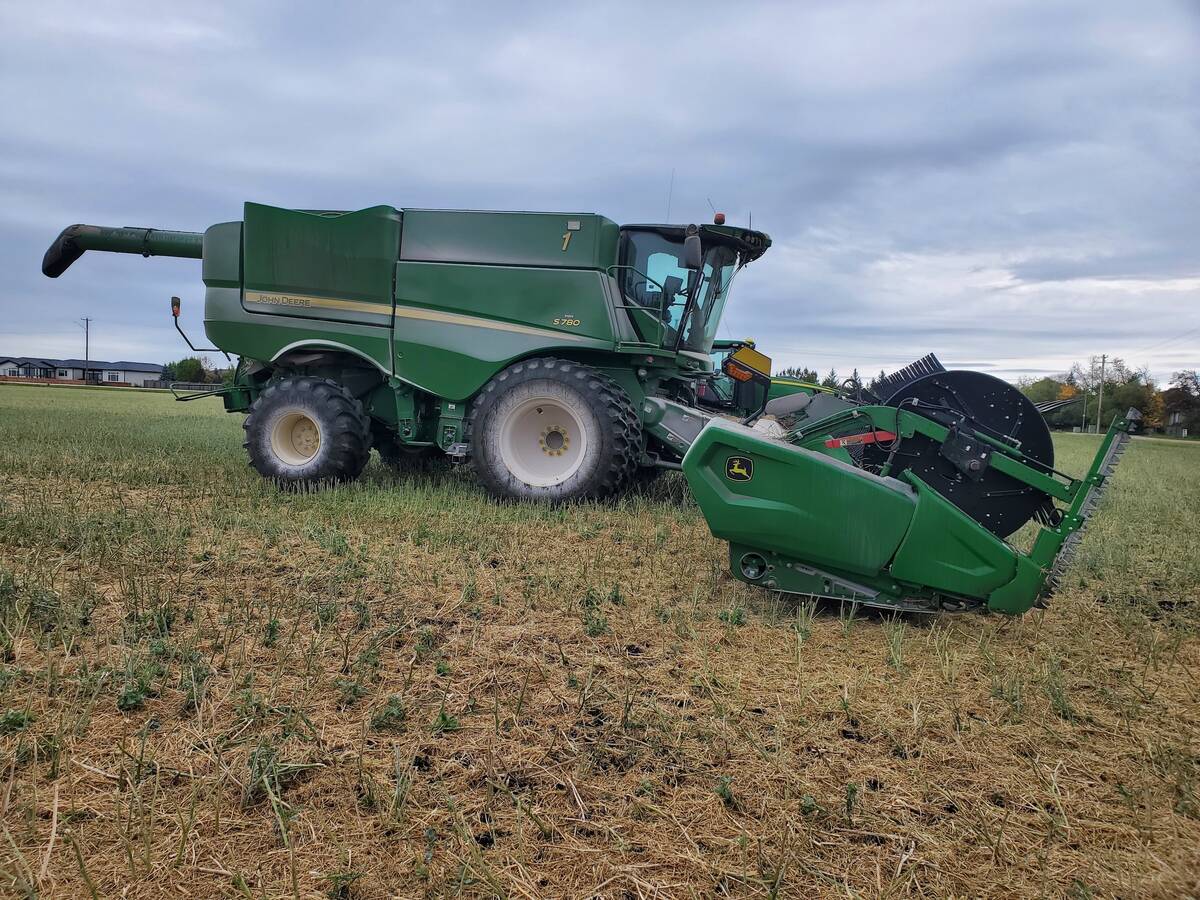Much of this year’s harvest will grade feed or worse, and now vomitoxin concerns are becoming an issue
Farmers and grain buyers in Western Canada may be forced to look harder than ever this year to find a home for large amounts of feed grain.
In addition to producing large crops of feed wheat and barley, a significant portion of what’s been harvested is showing high levels of vomitoxin or DON, the toxin related to fusarium graminearum.
Rex Newkirk, research chair in feed processing technology at the University of Saskatchewan, said significant quantities of barley, spring wheat and durum are showing higher-than-normal DON levels.
Read Also

Powdery mildew can be combine fire risk
Dust from powdery mildew can cause fires in combines.
“We’re hearing that a fair bit of barley has been affected this year,” said Newkirk.
“On the wheat side, I’m hearing that there’s lots out there ….”
Depending on the levels detected, DON can render some cereal grains virtually unsellable.
In most instances, grain containing DON can be blended and used in the feed industry, but in extreme cases, markets can be hard to find.
Malt barley buyers have a low tolerance for DON and anecdotal reports suggest that domestic maltsters will be scrambling to find adequate quantities.
One industry source told The Western Producer that the domestic malting industry normally won’t buy any malting barley with DON levels above 0.5 parts per million.
But with DON levels higher than that in many samples, unconfirmed reports suggest the malting industry may be considering doubling its threshold to one p.p.m.
“They (the malting industry) have tight, tight tolerances,” said the source. “This year, it sounds like they’re being a bit more flexible….”
According to Newkirk, many growers have enquired about sorting technologies that could be used to bring DON levels below established thresholds for the malting, milling, processing and feeding industries.
Sorting can reduce DON to a certain degree, but in many cases, it is extremely difficult to reach the standards expected by end users.
“In barley, the stuff we’re seeing is anywhere from two ppms to 10 ppms,” Newkirk said.
“I think it will all disappear … but it creates some challenges in that people will really have to be watching and measuring DON levels because you can’t afford to have it go too high and have off-performance … and lost customers and all that kind of thing.”
Newkirk said the hog industry generally has the lowest tolerance for DON because pigs are extremely sensitive to its toxic effects.
The maximum tolerance in swine diets is generally presumed to be around one p.p.m.
Levels should also be minimized in diets of lactating or pregnant animals and dairy cows.
Poultry and beef cattle have slightly higher tolerances.
Feedlot rations will sometimes use grain with DON levels of 10 p.p.m. or higher but at that level, diets normally include other feed sources that can temper the toxic effects of infected feed grains.
DON levels are also unusually high in western Canadian wheat this year.
Durum samples in particular are showing extremely high levels with some growers indicating that they may be forced to take durum out of their rotations entirely until varieties with better fusarium resistance become available. Significant amounts of prairie durum are expected to be sold as animal feed.
“Durum has very little resistance (to fusarium) and when we’re selling to Europe, we can’t be above 1.75 p.p.m.,” said Newkirk.
“When you start getting above 10 ppm, there’s not a lot of applications for that material, even in feedlots.”
Peter Watts, managing director of the Canadian Malting Barley Technical Centre, said quality issues such as DON and chitting will limit the amount of malting barley that is available to domestic maltsters and malt barley exporters.
Domestic consumption by the Canadian industry is normally in the range of one million tonnes. Malt barley exports are normally in the range of 800,000 to 900,000 tonnes.
Watts described Canadian malting barley supplies as tight, adding that some maltsters may be forced to back off their DON thresholds to meet their needs with domestic supplies.
He said fusarium is a prevalent quality issue this year but he declined to say what the Canadian malting industry normally uses as a DON benchmark.
“Everybody’s different in terms of what they will allow and it may be a bit variable from year to year so there may be a slightly higher acceptance level this year, just given the prevalence of fusarium all across the Prairies.”
High DON levels in malting barley are associated with foamy beer or gushing. For beer drinkers, gushing beer exhibits similar characteristics to beer that has been shaken before opening.
“On the processing side, gushing can be an issue of course, the big issue with fusarium is the concern over the toxin levels and the potential health impacts,” Watts said.
“It can have a negative impact on human health.”

















